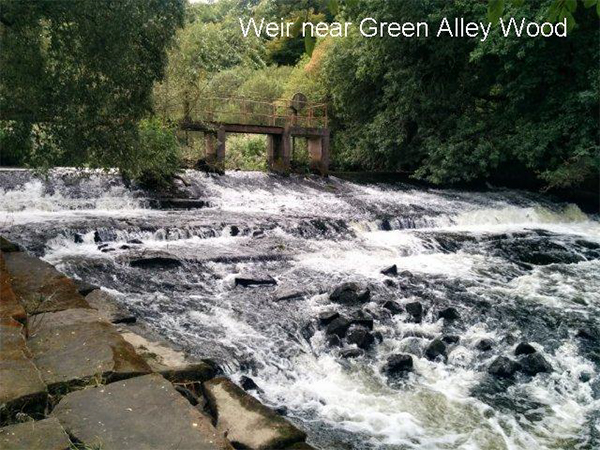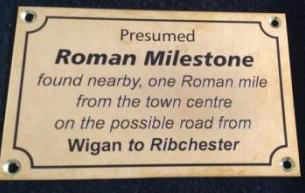
We're making some great progress with this project with 17 items now entered into our database. Some fascinating and little-known stories are also beginning to emerge. A great example is the concrete viaduct at Adam Bridge on the new road leading south out of Wigan (i.e. Southgate). It carries the former L&Y Railway over the Douglas and is Listed Grade II, being as it is quite a unique structure. It's the very first pre-stressed concrete bridge to be built anywhere in Britain (pre-dated only by ones in Switzerland). Constructed in 1947, it replaced an earlier cast iron bridge, but the original version was a wooden gantry which stretched all the way from the River to the north bank of the Leeds & Liverpool Canal (some have suggested this is the origin of the Wigan Pier joke). Another fascinating entry is the Jolly Mill down Chorley Road. When a former chairman of our Society, Adrian Morris, wrote about it in his book 'Standish Mills and Millers' in 1995, it was a derelict shell of a building. Since then, however, it's been transformed into a sumptuous five bedroom dwelling with commanding views down the Douglas Valley. It recently went on the market for over £1.3m where it is described as having 2 kitchens, 3 reception rooms, 12 acres of land, a large pond and stabling facilities. The images show that the developer has sympathetically retained the internal wooden structure. Although the current building probably only dates to the 18th century, according to the research the mill site itself goes back to the 14th century. It's great to see old buildings like these refurbished and repurposed to help retain our regions heritage.
One of the latest stories to emerge is that of the Weir at Green Alley Wood. Although only dating from the 1930s (built to feed the Canal more than 2 km away at Appley Bridge), its story dates back to the construction of the Lock System at Dean near Gathurst. When the Canal from Liverpool reached Dean in 1774, a lock was inserted to enable boats to sail all the way into Wigan on the Douglas Navigation. When eventually the Canal reached Wigan in 1781, the Navigation was abandoned and the River locks removed. However the weir at Dean was retained so that water could be 'impounded' for the canals use. It was only in 1935 that the weir was removed and the new weir built at Green Alley Wood.
I'm sure more interesting stories will emerge as we continue with this project (you can access the database via the Members Area on our website).
Sad News
In July we learned of the sad news of the death of Ann Pendlebury of Toddington Farm who past away at the age of 75 (apparently not Covid related). Mrs P, as we came to refer to her, was a great support to us during our excavations in 2017 and 2019, in fact it was Mrs P who put us on to the site in the first instance. She maintained an enthusiasm for all that we were doing, and I'm sure that we will all miss her (Patrick, who lives not far away, has passed on our sympathies to the family). Perhaps a fitting memorial to Mrs P might be the stone (which is still there) that she originally thought was Roman. Our investigations proved it not to be the case but it did lead us to think that this was the route of the Roman road from Wigan to Ribchester (following the ancient boundary line of the Wash Path from New Springs to Haigh).
Milestone recognition

A stone more likely to have had a Roman origin, however, has now been recognised with a plaque. As we reported in last November's Newsletter (No.227) this stone is embedded in the wall on the west side of Wigan Lane (found near by in the grounds of the hospital). Whether Roman or not, I suppose we will never know, but Councillor George Davies, who instigated the plaque, is pleased to take any opportunity to acknowledge Wigan's Roman heritage. The stone is on a rival route to Mrs P's. This route, although having to cross the Douglas twice at Leyland Mill Lane and Arley, is more direct and passes along the very convincingly straight Common End Road south of Adlington (one day perhaps we might find out the truth).
Standish Hall Remains
Glad to see one our members, Jim Meehan, getting some recognition for his research into what happened to the internal wood panelling and fireplaces from Standish Hall (we've reported on this previously in Newsletters No.191 and No.232). His report has now been published in the Past Forward magazine which is also available on line Page 18.
Still no meetings yet but, amongst the plethora of on-line material available, I thought this visit to the British Museum might help to keep you entertained. Keep safe - BA
|



